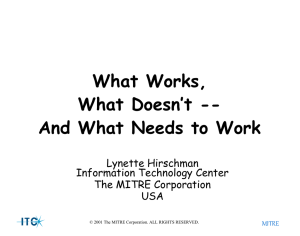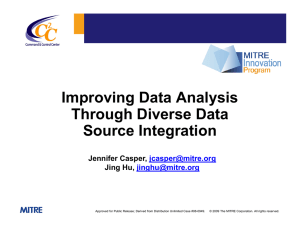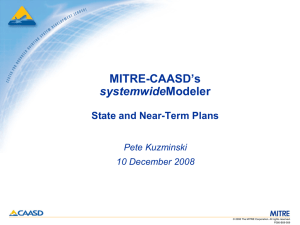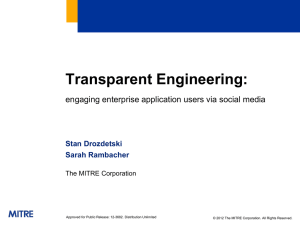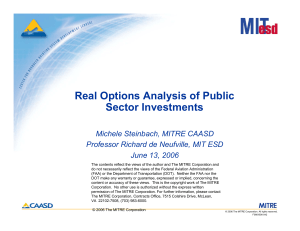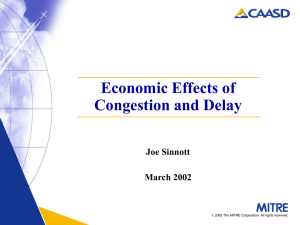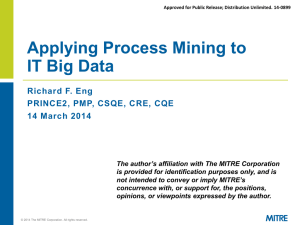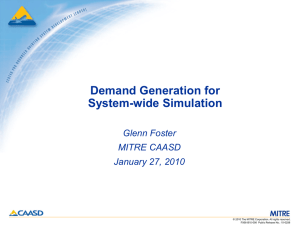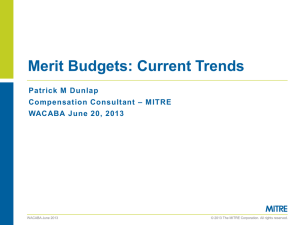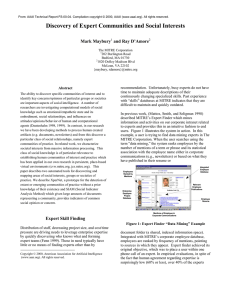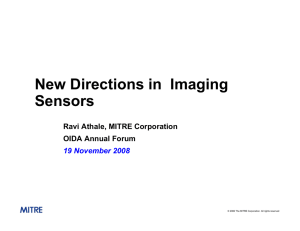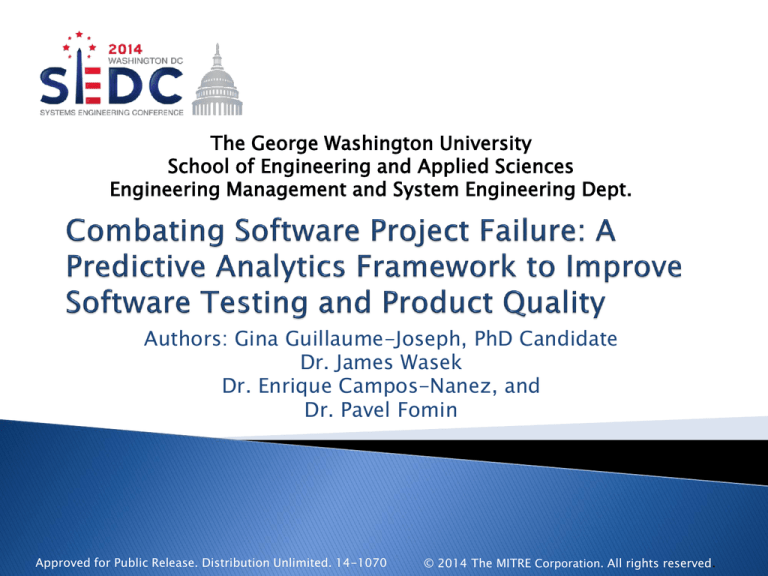
The George Washington University
School of Engineering and Applied Sciences
Engineering Management and System Engineering Dept.
Authors: Gina Guillaume-Joseph, PhD Candidate
Dr. James Wasek
Dr. Enrique Campos-Nanez, and
Dr. Pavel Fomin
Approved for Public Release. Distribution Unlimited. 14-1070
© 2014 The MITRE Corporation. All rights reserved.
Predictive Analytics is a data driven technology used to predict and
influence the future. We develop a Predictive Model that determines
failure points in the SELC and relates them to specific causal factors
of testing. Our work attempts to optimize project data and
information to provide informed and real-time decisions that
combat financial risks incurred with failed projects.
© 2014 The MITRE Corporation. All rights reserved.
2
Ewusi-Mensah, 2003 offers an empirically grounded study on
software failures and proposes a framework of abandonment
factors1 that highlight risks and uncertainties present in the SELC
phases of a software project.
Takagi et al, 2005 analyzed the degree of confusion2 of several
software projects using logistic regression analysis to construct a
model to characterize confused2 projects.
1 Ewusi-Mensah, Kweku. 2003. “Software Development Failures.” MIT Press (1): 187-187.
2 Takagi, Yasunari, Osamu Mizuno, and Tohru Kikuno. “An Empirical Approach to Characterizing Risky
Software
Projects Based on Logistic Regression Analysis.” Empirical Software Engineering, volume 10, number 4, pages 495515, December 2005.
© 2014 The MITRE Corporation. All rights reserved.
3
This work introduces the Project Testing Confidence Metric (PtcM)
and the corresponding Predictive Model. The Model developed from
data of software project failures and successes is based on a
framework that identifies significant influencing failure factors and
impact on the four major phases of the SELC.
© 2014 The MITRE Corporation. All rights reserved.
4
The failure factors in the testing phase have the greatest impact on
software project failure. The variables are used to develop the
Model.
© 2014 The MITRE Corporation. All rights reserved.
5
Software Project failures are costly and often result in an
organization losing millions of dollars due to termination of a poor
quality project (Jones, 2012).
Software engineering is a risky endeavor whose outcome often
cannot be predetermined.
Software Testing is a critical component of mature software
engineering; however, project complexities make it the most
challenging and costly phase of the Systems Engineering Lifecycle
(SELC) (Jones, 2012).
Jones, Capers. “Software Quality Metrics: Three Harmful Metrics and Two Helpful Metrics”; June 2012; Retrieved from website:
http://www.ppi-int.com/systemsengineering/free%20resources/Software%20Quality%20Metrics%20Capers%20Jones%20120607.pdf.
© 2014 The MITRE Corporation. All rights reserved.
6
The Predictive Model leverages a development organization’s past
project performance to predict outcomes of future work. The PtcM
uses that data to determine the effectiveness of testing by
correlating previous project failure with inadequate testing to isolate
those areas for improvement.
© 2014 The MITRE Corporation. All rights reserved.
7
The Predictive Model and the resulting PtcM provide the
organization’s leadership insight into determining which projects to
embark upon within the project portfolio.
© 2014 The MITRE Corporation. All rights reserved.
8
The Predictive Model and the PtcM will assist in maturing an
organization’s testing and quality assurance capabilities by
implementing institutional learning. By predicting the likelihood of
project failure during the early planning phase, this work will
promote a more successful project portfolio for the organization.
Our work helps organizations answer the question, “What will
happen in the future and how can we act on this insight?”
© 2014 The MITRE Corporation. All rights reserved.
9
Ms. Gina Guillaume-Joseph
The MITRE Corporation
Systems Engineering, Ph.D. Candidate
The George Washington University
Contact: ginagj@gwu.edu
© 2014 The MITRE Corporation. All rights reserved.
10

